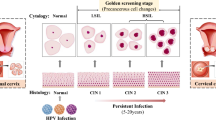Abstract
Purpose
To determine if deep learning artificial intelligence algorithms can be used to accurately identify key morphologic landmarks on oocytes and cleavage stage embryo images for micromanipulation procedures such as intracytoplasmic sperm injection (ICSI) or assisted hatching (AH).
Methods
Two convolutional neural network (CNN) models were trained, validated, and tested over three replicates to identify key morphologic landmarks used to guide embryologists when performing micromanipulation procedures. The first model (CNN-ICSI) was trained (n = 13,992), validated (n = 1920), and tested (n = 3900) to identify the optimal location for ICSI through polar body identification. The second model (CNN-AH) was trained (n = 13,908), validated (n = 1908), and tested (n = 3888) to identify the optimal location for AH on the zona pellucida that maximizes distance from healthy blastomeres.
Results
The CNN-ICSI model accurately identified the polar body and corresponding optimal ICSI location with 98.9% accuracy (95% CI 98.5–99.2%) with a receiver operator characteristic (ROC) with micro and macro area under the curves (AUC) of 1. The CNN-AH model accurately identified the optimal AH location with 99.41% accuracy (95% CI 99.11–99.62%) with a ROC with micro and macro AUCs of 1.
Conclusion
Deep CNN models demonstrate powerful potential in accurately identifying key landmarks on oocytes and cleavage stage embryos for micromanipulation. These findings are novel, essential stepping stones in the automation of micromanipulation procedures.








Similar content being viewed by others
Data availability
The datasets, R Studio statistical code, and machine learning algorithms used and/or analyzed during the current study are available from the corresponding author on reasonable request and under a data transfer agreement with Mass General Brigham.
References
Patrat C, Kaffel A, Delaroche L, Guibert J, Jouannet P, Epelboin S, et al. Optimal timing for oocyte denudation and intracytoplasmic sperm injection. Obstet Gynecol Int. 2012;2012:1–7.
Carvalho M, Leal F, Mota S, Aguiar A, Sousa S, Nunes J, et al. The effect of denudation and injection timing in the reproductive outcomes of ICSI cycles: new insights into the risk of in vitro oocyte ageing. Hum Reprod. 2020;35(10):2226–36.
Rosen M, Shen S, Dobson A, Fujimoto V, Mcculloch C, Cedars M. Oocyte degeneration after intracytoplasmic sperm injection: a multivariate analysis to assess its importance as a laboratory or clinical marker. Fertil Steril. 2006;85(6):1736–43.
Dumoulin JCM. Embryo development and chromosomal anomalies after ICSI: effect of the injection procedure. Hum Reprod. 2001;16(2):306–12.
Gvakharia MO, Lipshultz LI, Lamb DJ. Human sperm microinjection into hamster oocytes: a new tool for training and evaluation of the technical proficiency of intracytoplasmic sperm injection. Fertil Steril. 2000;73(2):395–401.
Durban M, García D, Obradors A, Vernaeve V, Vassena R. Are we ready to inject? Individualized LC-CUSUM training in ICSI. J Assist Reprod Genet. 2016;33(8):1009–15.
Zhe Lu, Zhang Xuping, Leung C, Esfandiari N, Casper RF, Sun Yu. Robotic ICSI (Intracytoplasmic Sperm Injection). IEEE Trans Biomed Eng. 2011;58(7):2102–8.
Weng L, Lee GY, Liu J, Kapur R, Toth TL, Toner M. On-chip oocyte denudation from cumulus–oocyte complexes for assisted reproductive therapy. Lab Chip. 2018;18(24):3892–902.
You JB, McCallum C, Wang Y, Riordon J, Nosrati R, Sinton D. Machine learning for sperm selection. Nat Rev Urol. 2021;18(7):387–403.
Riordon J, McCallum C, Sinton D. Deep learning for the classification of human sperm. Comput Biol Med. 2019;111:103342.
Javadi S, Mirroshandel SA. A novel deep learning method for automatic assessment of human sperm images. Comput Biol Med. 2019;109:182–94.
Zhang Z, Dai C, Huang J, Wang X, Liu J, Ru C, et al. Robotic immobilization of motile sperm for clinical intracytoplasmic sperm injection. IEEE Trans Biomed Eng. 2019;66(2):444–52.
Wong CY, Mills JK. Automation and optimization of multipulse laser zona drilling of mouse embryos during embryo biopsy. IEEE Trans Biomed Eng. 2017;64(3):629–36. https://doi.org/10.1109/TBME.2016.2571060.
Kanakasabapathy MK, Thirumalaraju P, Kandula H, Doshi F, Sivakumar AD, Kartik D, et al. Adaptive adversarial neural networks for the analysis of lossy and domain-shifted datasets of medical images. Nat Biomed Eng. 2021;5(6):571–85.
Acknowledgements
This work was partially supported by the Brigham Precision Medicine Developmental Award and Innovation Evergreen Fund (Brigham and Women’s Hospital), Partners Innovation Discovery Grant (Partners Healthcare), and R01EB033866, R01AI138800, R33AI140489, and R61AI140489 (National Institute of Health).
Author information
Authors and Affiliations
Contributions
All authors contributed to the study conception and design. Material preparation, data collection, and analysis were performed by Charles L. Bormann, Victoria S. Jiang, Manoj Kumar Kanakasabapathy, and Prudhvi Thirumalaraju. The first draft of the manuscript was written by Victoria S. Jiang and all authors commented on previous versions of the manuscript. All authors read and approved the final manuscript.
Corresponding authors
Ethics declarations
Ethics approval and consent to participate
Informed consent was obtained from each individual before participation. Study protocols were approved by the Institutional Review Board (IRB#2019P001000) at Massachusetts General Hospital and Brigham and Women’s Hospital.
Consent for publication
Not applicable.
Conflict of interest
Authors Dr. Hadi Shafiee, Dr. Charles Bormann, Prudhvi Thirumalaraju, and Manoj Kumar Kanakasabapathy wish to disclose a patent, currently licensed by a commercial entity, on the use of AI for embryology (US11321831B2). The rest of the authors declare that they have no competing interests.
Additional information
Publisher's note
Springer Nature remains neutral with regard to jurisdictional claims in published maps and institutional affiliations.
Rights and permissions
Springer Nature or its licensor (e.g. a society or other partner) holds exclusive rights to this article under a publishing agreement with the author(s) or other rightsholder(s); author self-archiving of the accepted manuscript version of this article is solely governed by the terms of such publishing agreement and applicable law.
About this article
Cite this article
Jiang, V.S., Kartik, D., Thirumalaraju, P. et al. Advancements in the future of automating micromanipulation techniques in the IVF laboratory using deep convolutional neural networks. J Assist Reprod Genet 40, 251–257 (2023). https://doi.org/10.1007/s10815-022-02685-9
Received:
Accepted:
Published:
Issue Date:
DOI: https://doi.org/10.1007/s10815-022-02685-9




